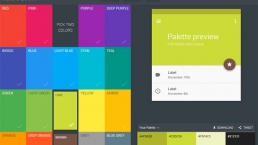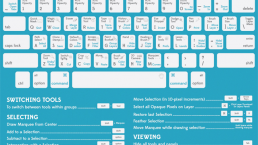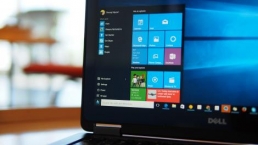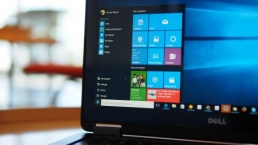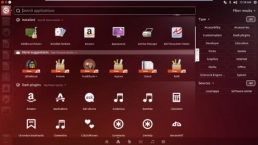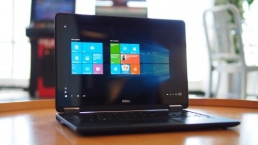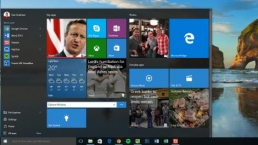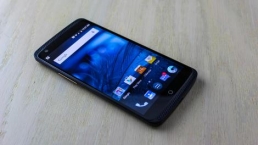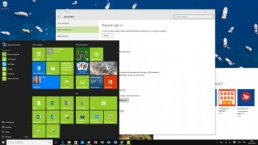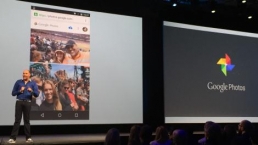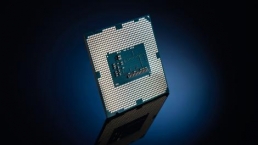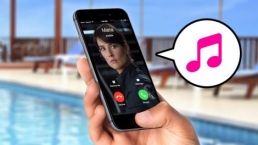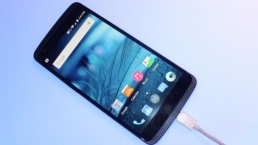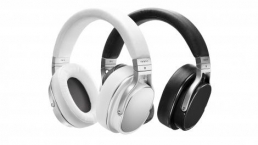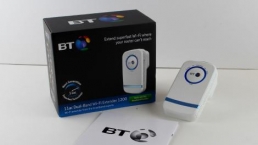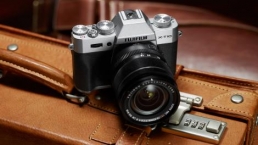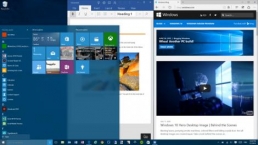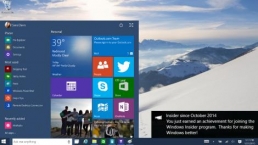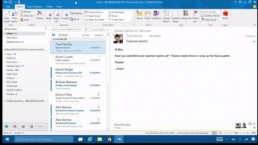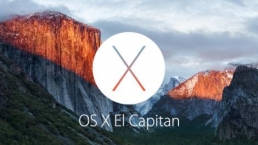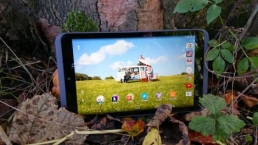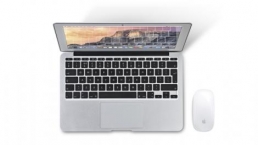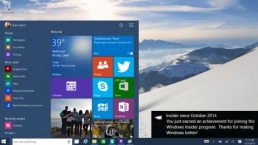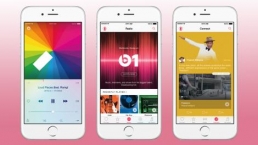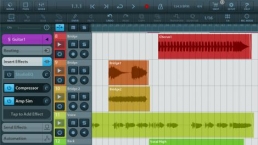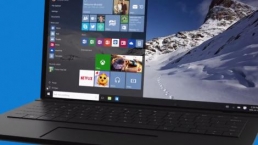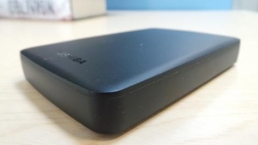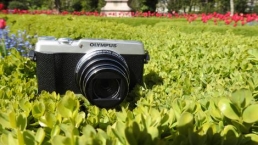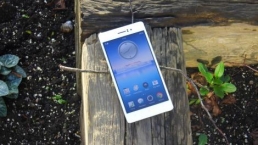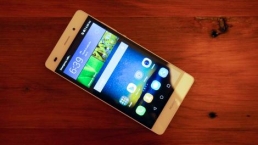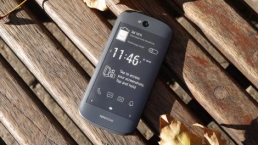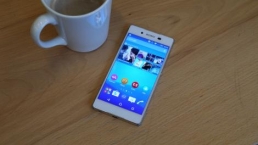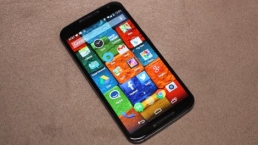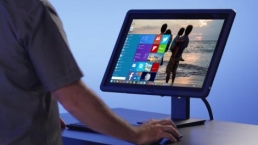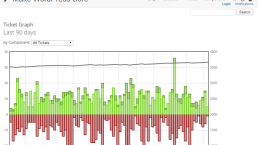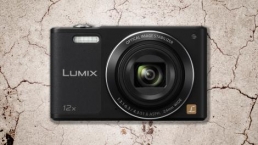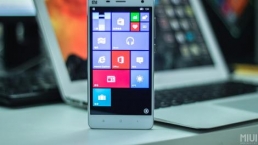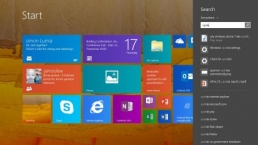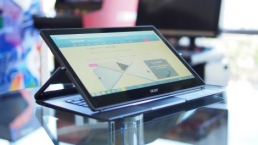
Introduction and features
The action camera market is expanding at blinding speed, and the best known name in this sector is GoPro. GoPro cameras feature extensively at sports events and they’re used by broadcasters like the BBC to capture spectacular wildlife footage.
• Check out the latest camera reviews and news on the Techradar Camera Channel home page.
GoPros and their rivals are ‘POV’, or ‘point of view’ cameras – they capture what you’re doing, not necessarily what other people are doing, and what has made these cameras so groundbreaking is their small size and high-quality, high-resolution footage – and the characteristic GoPro wideangle ‘look’.
• See our guide to GoPro and action cameras.
This is a camera not much larger than a matchbox which can capture 4K video at an incredible 30 fps (that’s the same as the Panasonic GH4).
There’s no screen, and no way of checking your composition on the camera itself, but you can connect your GoPro via Wi-Fi to a smart device to check live composition and clips. At any rate, the lens has a 170 degree angle of view so you’re unlikely to miss anything.
GoPro cameras have now hit their fourth generation and the line-up has been overhauled with three new models – the GoPro Hero4 Black, GoPro Hero4 Silver and regular GoPro Hero. You can see what’s new in our earlier GoProHero4 news story, but it’s the top-of-the range Hero4 Black we’ve got our hands on here.
It goes on sale at £369/US$499/AU$639 and the headline new features are 4K video at 30fps (the Hero3+ could shoot 4K but only at 15fps) and 1080p at 120fps – that’s full HD in 1/4-speed slow motion. This is a crazy amount of power in a device that costs about the same as an entry-level DSLR or compact system camera.
Other new features include Bluetooth support, not just Wi-Fi, and the ability to tag your best footage as you shoot it.

Aesthetically, the Hero4 Black looks much the same as the Hero3+, with the familiar GoPro box form and dimensions. This means that the standard waterproof housing remains the same and is included with the camera when purchased. But once you start using it you realise there have been a few significant changes to the design which make a big difference.
Some are fairly minor – the camera status and Wi-Fi lights that were on the front before are now two small illuminated slits to the left of the LED screen.
And on the right hand side of the body the old direct access Wi-Fi button now becomes the settings button – and if you hold down for a couple of seconds it will still enable you to toggle Wi-Fi on and off.
This new settings button is part of the overhauled navigation system, which is a vast improvement and actually makes using the camera far more intuitive than the previous version.

Finally, the battery compartment is no longer accessed through the back of the camera. It’s now located in the base, and the battery type also changes from 3.7v 1180mAh to 3.8v 1160mAh. More importantly, it’s much easier to swap out in the field than before.
As with previous models there’s a connection on the back for a screen. On the side under a protective flap are two connectors that enable direct connection to HDMI and USB along with a Micro SD card slot.
Build quality and handling
The GoPro Hero 4 is a camera of two parts, with the camera itself and a protective waterproof housing. The housing can easily be removed and replaced with other housing designs that offer different levels of protection and features depending on the activity you’re doing.
The GoPro Hero4 Black comes supplied with a standard housing in the box, this is a good general purpose case, providing waterproofing up to 40m. There are further housings such as the dive housing (the standard housing for the Hero3) that is waterproof up to 60m, and a selection of skeleton housings for use with drones or the various harnesses.

Using either of the waterproof housings does add bulk, but when compared with action cameras of a similar design such as the Toshiba Camileo X-Sport, the GoPro is still compact.
These housings are at the heart of GoPro’s versatility and feature the standard GoPro mount, this is widely supported by third party manufacturers, so there’s an abundance of accessories out there. This means that if there is something that you would like to attach your GoPro to, then there’s likely to be a mount out there for it. The GoPro mount is extremely secure and when compared to mounts from other action camera manufacturers, you can really see the benefit of the design. It enables the camera to be bolted down tightly without wobble, which might seem like a small ask but is surprising difficult with some mount designs.
• See our Top 10 GoPro Accessories feature.
The accessories we used, included the GoPro handlebar mount, K-Edge Go Big Pro handlebar mount and DJI Phantom quadcopter, fitted to the GoPro’s housing easily and once tightened held the camera in place securely, helping to prevent vibrations which can plague action camera footage. The housing and mounts were also tough enough to survive a heavy mountain bike crash better than its user. With the bike’s front wheel being a complete write off and its rider having to be patched up in the local A&E, the GoPro Hero4 Black, mounts and case all survived with a coating of mud and leaves.
We tested the camera on a relatively cold morning and the casing suffered from steaming up a little on the inside when moving from a cold to warm environment. This has been a common issue with the waterproof cases, but is easily solved, and GoPro suggests you use a small moisture strip, that can be bought separately, and can be easily fitted into the case.
Whichever case you choose they all allow direct access to the buttons so you are able to easily navigate the various menus, change setting and set the camera recording.

Operation of the camera is straight forward with three buttons enabling complete access to the menu system and settings, as well as the operation of the camera. There have been a few changes since the Hero 3+ to these navigation controls and while the buttons are still in the same position as previous GoPro versions, the way in which they work has been slightly tweaked, which makes finding your way around quicker and more intuitive.
The large on/off button is position on the front of the camera and also acts as the mode button once the camera is switched on. This enables you to switch between Video, Photo, Multi-Shot, Playback and Setup. With a mode selected the options for that mode can then be accessed by a single press of the settings button on the side of the camera. The Mode button is then used to scroll through the settings and the button on top is used to make your selection.
Finally once you’ve exited the settings the button on top of the camera starts or stops recording.
Smart features
Connecting to a smart device is straightforward, and there’s an app available for both iOS and Android devices. Once Wi-Fi is activated a blue light flashes on the front. The GoPro can then be selected on your smart device from the list of usual Wi-Fi connections, and once passwords are entered it’s just a case of loading up the app.
The app is slickly designed and enables you to connect and control your GoPro with selectable live feed and the ability to review footage and stills direct from the camera. When not connected to the camera and your smart device is online you can also get inspiration from other GoPro users through the GoPro channel.
Using the app is straightforward and compared to apps used by other action cameras such as the iON Air Pro it really shows the GoPro developers have a good understanding of how the camera and Wi-Fi connection will be used.
Options are large, settings are easy to find and there’s enough within the app to make you feel that it’s by no means an after thought.
The Hero 3+ upgraded the speed of it’s Wi-Fi hardware and this speed is really apparent in the Hero 4 Black enabling the smooth playback of footage. Unlike some competitors that struggle with constantly dropping frames, pausing or loosing connection.
Video tasty
Video is of course what GoPro’s is known for and to get started all you really need to do is switch on and hit the record button. But unlike many action cameras GoPro gives you choice and this is both a strength and weakness of the design.
For those who know about video and how the footage they’re shooting will be used and edited, the wealth of capture options is an absolute dream come true, however for the average user the volume of options for resolution, frame rates can all be a bit bewildering.
For example there are 12 resolutions and a variety of frame rates to choose from, ranging from high resolution 4K (3840×2160) at either 24, 25 or 30 frames a second (fps) to low resolution WVGA (848×480) at 240 FPS.
Aside from the obvious size difference of the different resolutions the part that is of most interest to extreme sports enthusiasts is the frame rate. HD or 1080p resolution is at present the most popular choice and as such will probably be the most used option for the GoPro. Usually 1080p high definition video is recorded at a respectable 29.7 fps which provides nice smooth playback. The GoPro Hero4 enables HD recording at 120, 90, 60, 50, 48, 30, 25, 24 fps this means that with the highest frame rate selected for recording of, 120 fps when edited down to 29.7 fps for playback the footage will produce smooth slow motion, a feature that is becoming increasingly popular with the extreme sports sector.

In order to select 1080P at 120 fps a short ritual of button pressing must be followed; video mode must firstly be selected, then the settings button on the side pressed. The mode button is then used to find the option, in this case the resolution that you want which is then selected with the top button. The mode button is then used to scroll through the resolution options and once 1080p is showing the top button is used to select. The same process is then used to set the frame rate or any other options that needs changing. All fine if you know what you’re doing otherwise a little complex, but it’s far easier than the similar but slightly different system of the Hero3.
The GoPro captures a 170 degree point of view and with an f/2.8 lens almost everything in front of the lens is captured, so as long as the camera is roughly pointing in the right direction you can be pretty sure that you’re going to capture something.. There are options to change the point of view to narrow in some resolution settings, but for the best quality footage we found it was best to stick to the standard wide angled view.
Performance
Our test day proved to be a typical late autumn day, so despite aspirations to hit the surf, with temperatures just tipping zero and a light frost and later drizzle, we headed into the forest to test the camera with a bit of off-roading.
Setting the camera up and attaching to the bars of a mountain bike couldn’t have been easier, even in the cold and wet when wearing gloves. Operation was simple and a flashing red light indicated that all systems where go.

The small LCD on the front gave a brief breakdown of the settings that were being used and the length of recording time that had lapsed, a handy indicator that reassures you that footage is being captured.
During the off-roading and later using the Hero4 on a quadcopter drone we switched between resolutions and frame rates to check on the quality of the footage.
Conditions where at best murky, so while the footage looked dull this was more due to the day than the quality of capture.
Switching between resolutions showed a high level of detail was captured in each setting, and despite the cameras sensitivity being pushed to ISO 1600, due to the low light, noise was apparent but handled well.
In the lowest of light conditions the colour rendition did suffer with the automatic white balance making changes quickly, but generally the camera captured natural and well saturated colour tones.
The GoPro has spot metering and exposure compensation options, but left to its own devices it does an excellent job. Moving the camera quickly from light to dark showed the exposure system was able to keep up with the changes in light, adjusting and making exposure changes smoothly.
Video quality
Looking at the 4K footage and comparing this directly against that of the GoPro Hero 3+ the improvement in quality from 15 to 30 fps is instantly apparent, with the videos motion looking far smoother than in the previous model and showing that in a camera of this size the 4K ability isn’t just a novelty but a feature that could and should be used.
Using the more common resolution of 1080p at 30 fps, 50 fps and 120fps showed the most exciting results. The footage at each rate looked smooth on screen but the real revelation came when the footage was edited through the Final Cut Pro X and adjusted to a base frame rate of 29.7 fps, stretching the footage over four seconds.
The result of the 30 fps footage looked stuttered as you’d imagine, and there was only a slight improvement in the 50 fps clips. Looking at the footage capture at 120 fps and slowed to 29.7 fps showed smooth quality footage that retains detail and colour and most importantly smoothness of motion.

The lens of GoPro was improved in the Hero 3+ and in the latest version the lens captures good quality footage with the distinct action camera look caused by the huge field of view and distortion.
However for a lens that captures 170 degree field of view the distortion isn’t as pronounced as you’d expect ,with footage in the centre of the frame kept within acceptable limits of distortion and major distortion only effecting the edges.
Chromatic aberration at the mid to edge frame is apparent in high contrast situations especially in the footage when riding or flying through trees.
Sound and software
As with the GoPro Hero 3 and 3+ the Hero 4 features the high quality ProTune feature that gives you more control over the quality and output of your camera. An ideal tool if you’re wanting to match up footage from several different cameras. We’ll take a closer look at this is the near future.
The GoPro has a built in microphone which captures the ambient noise well. It’s is by no means broadcast quality but does the job. There is the option to connect an external microphone through a USB which will be of interest to those wanting to buy the Music version of the GoPro Hero 4 Black. We have yet to test this feature but will bring you the results when we do.
The all new battery lasts for a good hour and half of shooting time, although make sure that the Wi-Fi connection is switched off as this will reduce operating times significantly.
The camera isn’t the end of the story and one of the features that really makes GoPro stand out from the rest is the GoPro Studio software. This is available for Mac and PC and enables you to edit the footage that you’ve captured. The software itself is a direct free download from the GoPro website and once downloaded enables you to get stuck in and creating.
The organisation and edit tools are pretty simple but they let you get editing straight away. There are more advanced features that enable you to make the most from the fast frame rates by speeding up and slowing down footage, and as an editing package it’s really a great place to start. It also supports most Canon and Nikon video files which is handy as neither company supply video editing software with their cameras.
Sample videos
Note that these are hosted on YouTube and won’t display at their full size by default – use the YouTube Settings pop-up to change the resolution.
YouTube : https://www.youtube.com/watch?v=65OW1FlpU78
Filmed at 120fps in low light.
YouTube : https://www.youtube.com/watch?v=Hu7CfAPHFPg&feature=youtu.be
The Hero4 Black’s exposure system handles transitions from shade to sun quickly and easily.
YouTube : https://www.youtube.com/watch?v=dg4bvC9xego&feature=youtu.be
The previous clip was shot at 120fps – here it is played back at 30fps in 4x slow motion.
YouTube : https://www.youtube.com/watch?v=6_4RTRrG9tU&feature=youtu.be
A slow panning shot showing the Hero4 Black’s ability to deal with changing exposure.
YouTube : https://www.youtube.com/watch?v=0cSHt5i5HOY&feature=youtu.be
This static shot shows the level of detail and dynamic range the GoPro Hero4 can capture.
YouTube : https://www.youtube.com/watch?v=zM9PMD-S5RE&feature=youtu.be
A sample clip shot in a low-light high-contrast situation.
Verdict
GoPro is the main player in the action camera market, and while the design strikes many as boxy and simplistic, when compared against other action cameras you realise there’s a reason for GoPro’s success.

This is a small matchbox sized camera that can go anywhere and shoot broadcast-quality footage. The range of mounts that are available out there enable the camera to be mounted to just about anything, and the mount design while simple enables the camera to be attached firmly without play.
The navigation system overhaul makes settings and modes changes easier than ever, so there is never a reason to miss the action. The design might not have changed a great deal and the upgrades over the Hero 3+ might seem like refinements, but what the 120 frames per second and greater processing speeds mean is that GoPro has once again increased its desirability in an increasingly competitive action cameras arena.
We liked
The Hero4 Black is tough, adaptable and shoots really high quality video. The control interface has been improved over previous versions and it’s now a lot easier to use – it’s steady improvement like this that makes a great product, not just headline new features. Having said that, the ability to shoot 4K video at 30fps is an important step forward, but it’s the ability to shoot full HD at 120fps that’s perhaps the most amazing advance.
We disliked
Some will prefer ‘bullet’ style action cameras over the boxy GoPro. They’re more discreet and, in a lot of cases, simpler to operate. The biggest flaw with the GoPro Hero4 Black is its slow startup time – you have to press and hold the power button for several seconds before the camera is ready to start shooting, and that could lead to some missed opportunities and a good deal of frustration.
Final verdict
Despite increasing competition from rivals, the GoPro is still the definitive action cam, and the Hero4 Black produces broadcast-quality video at a price even casual adventure fans can afford.
Extreme sports enthusiasts will love the out of the box usability of the GoPro Hero4 Black. You charge it, fix it on, record, upload it and you’re done. Those who want more can delve into the settings to make the most of the new frame rates and resolutions, and creatives will love the versatility that features like ProTune promise.
![]()
Related Posts
December 6, 2021
7+ Web Design Trends for 2022: Which Will You Use?
December 6, 2021
The 10 Best WordPress Booking Plugins to Use On Your Website
December 6, 2021
How to Use a Web Cache Viewer to View a Cached Page
November 6, 2021
10 Modern Web Design Trends for 2022
November 6, 2021
Best Free SSL Certificate Providers (+ How to Get Started)
November 6, 2021
How to Design a Landing Page That Sends Conversions Skyrocketing
November 6, 2021
What Are the Best WordPress Security Plugins for your Website?
October 6, 2021
Your Guide to How to Buy a Domain Name
October 6, 2021
How to Build a WordPress Website: 9 Steps to Build Your Site
September 6, 2021
10 Best Websites for Downloading Free PSD Files
September 6, 2021
HTML5 Template: A Basic Code Template to Start Your Next Project
September 6, 2021
How Much Does It Cost to Build a Website for a Small Business?
September 6, 2021
A List of Free Public CDNs for Web Developers
September 6, 2021
6 Advanced JavaScript Concepts You Should Know
August 6, 2021
10 Simple Tips for Launching a Website
August 6, 2021
25 Beautiful Examples of “Coming Soon” Pages
August 6, 2021
10 Useful Responsive Design Testing Tools
August 6, 2021
Best-Converting Shopify Themes: 4 Best Shopify Themes
July 6, 2021
What Is Alt Text and Why Should You Use It?
July 6, 2021
24 Must-Know Graphic Design Terms
June 6, 2021
How to Design a Product Page: 6 Pro Design Tips
April 6, 2021
A Beginner’s Guide to Competitor Website Analysis
April 6, 2021
6 BigCommerce Design Tips For Big Ecommerce Results
April 6, 2021
Is WordPress Good for Ecommerce? [Pros and Cons]
March 6, 2021
Make Websites Mobile-Friendly: 5 Astounding Tips
March 6, 2021
Shopify vs. Magento: Which Platform Should I Use?
March 6, 2021
Top 5 Web Design Tools & Software Applications
February 6, 2021
Website Optimization Checklist: Your Go-To Guide to SEO
February 6, 2021
5 UX Design Trends to Dazzle Users in 2021
February 6, 2021
What Is the Average Page Load Time and How Can You Do Better?
February 6, 2021
Choosing an Ecommerce Platform That Will Wow Customers
February 6, 2021
7 Best Practices for Crafting Landing Pages with Forms
February 6, 2021
7 B2B Web Design Tips to Craft an Eye-Catching Website
January 6, 2021
Mobile-Friendly Checker | Check Your Site’s Mobile Score Now
January 6, 2021
8 Tips for Developing a Fantastic Mobile-Friendly Website
December 6, 2020
How to Add an Online Store to Your Website [4 Ways]
December 6, 2020
5 UX Design Tips for Seamless Online Shopping
November 6, 2020
Ecommerce Website Essentials: Does Your Site Have All 11?
November 6, 2020
5 Small Business Website Essentials You Need for Your Site
November 6, 2020
Your Website Redesign Checklist for 2020: 7 Steps for Success
May 1, 2020
Psychology of Color [Infographic]
April 21, 2020
How to start an online store that drives huge sales
January 3, 2020
5 Lead Generation Website Design Best Practices
March 6, 2019
6 Reasons You Should Redesign Your Website in 2019
March 6, 2019
7 Web Design Trends for 2019
February 19, 2019
Who owns the website/app source code, client or developer
February 7, 2019
Don’t Let Your Domain Names Expire in 2019
January 8, 2019
2019 Website Development Trends To Note
October 6, 2017
How Web Design Impacts Content Marketing
October 6, 2017
How to Choose a Navigation Setup
August 6, 2017
Why User Experience Matters to Marketing
July 6, 2017
5 Ways Web Design Impacts Customer Experience
September 6, 2016
How to Learn Angular
September 6, 2016
The Excuses for Not Having a Website (Infographic)
September 6, 2016
How to Build an Award-Winning Web Design Team
September 6, 2016
13 Free Data Visualization Tools
August 6, 2016
How Selling Pastries Helped Us Design a Better Product
August 6, 2016
11 Sites to Help You Find Material Design Inspiration
July 4, 2016
How to change free wordpress.com url
April 6, 2016
The 5 Best Free FTP Clients
April 6, 2016
7 Free UX E-Books Worth Reading
March 6, 2016
Can Handwritten Letters Get You More Clients?
December 10, 2015
Star Wars Week: How to create your own Star Wars effects for free
December 6, 2015
20 "Coming Soon" Pages for Inspiration
December 6, 2015
6 Free Tools for Creating Your Own Icon Font
December 6, 2015
9 Useful Tools for Creating Material Design Color Palettes
November 6, 2015
20 Free UI Kits to Download
November 6, 2015
50 Web Designs with Awesome Typography
November 6, 2015
When to Use rel="nofollow"
November 6, 2015
7 Free Books That Will Help You Become More Productive
November 6, 2015
50 Beautiful One-Page Websites for Inspiration
November 6, 2015
Circular Images with CSS
October 6, 2015
Lessons Learned from an Unsuccessful Kickstarter
October 6, 2015
5 Games That Teach You How to Code
October 6, 2015
Cheatsheet: Photoshop Keyboard Shortcuts
October 6, 2015
An Easy Way to Create a Freelance Contract for Your Projects
October 6, 2015
50 Design Agency Websites for Inspiration
September 29, 2015
JB Hi-Fi shutting the book on ebooks
September 24, 2015
Opinion: Quick, Quickflix: It's time to give yourself the flick
September 24, 2015
New Star Wars 360-degree video is among first on Facebook
September 21, 2015
Apple purges malicious iPhone and iPad apps from App Store
September 12, 2015
Apple's new Live Photos feature will eat up your storage
September 12, 2015
The latest Windows 10 Mobile preview has been delayed
September 12, 2015
IBM buys StrongLoop to add Node.js development to its cloud
September 8, 2015
Fake Android porn app takes your photo, then holds it ransom
September 6, 2015
50 Restaurant Websites for Inspiration
September 6, 2015
Zero UI — The Future of Interfaces
September 6, 2015
50 Beautiful Websites with Big Background Images
September 6, 2015
Infographic: 69 Web Design Tips
September 6, 2015
Free Windows 10 Icons
September 2, 2015
Instagram turns itself into a genuine messaging service
August 11, 2015
In Depth: How Microsoft taught Cortana to be more human
August 11, 2015
Windows 10 price, news and features
August 11, 2015
Windows 10's broken update introduces endless reboot loop
August 11, 2015
Windows 10 races to 27m installs
August 11, 2015
Windows 10 IoT Core gets first public release
August 10, 2015
iOS Tips: How to backup iPhone to an external drive
August 10, 2015
Windows 8.1 RT finally getting Windows 10 Start Menu
August 10, 2015
How to use Windows Hello
August 10, 2015
Review: Moto Surround
August 10, 2015
Review: Moto G (2015)
August 9, 2015
8 of the best free VPN services
August 8, 2015
Use Firefox? Mozilla urges you update ASAP
August 7, 2015
Mac Tips: Apple Mail: How to remove the Favorites Bar
August 7, 2015
How to make the OS X dock appear faster
August 7, 2015
Review: BQ Aquaris E45 Ubuntu Edition
August 7, 2015
Review: Acer Liquid Jade Z
August 6, 2015
How to reinstall Linux
August 6, 2015
How to reinstall Windows
August 6, 2015
Updated: Apple Music: release date, price and features
August 6, 2015
Social News Websites for Front-End Developers
August 6, 2015
10 Free JavaScript Books
August 6, 2015
50 Beautiful Blog Designs
August 6, 2015
Animated SVG Pipes Effect
August 6, 2015
Launching Your First App
August 5, 2015
Windows 10 goes freemium with paid apps
August 5, 2015
Updated: Week 1 with Windows 10
August 5, 2015
Mac Tips: How to manage Safari notifications on Mac
August 5, 2015
Microsoft Sway may kill the PowerPoint presentation
August 4, 2015
Microsoft gives Outlook on the web a new look
August 4, 2015
Mac OS X vulnerable to new zero-day attack
August 4, 2015
Windows 10 users warned of two scams
August 4, 2015
Microsoft's Docs.com is now available to everyone
August 3, 2015
Mac Tips: How to edit the Favorites sidebar on Mac
August 3, 2015
Updated: Windows 10 price, news and features
July 29, 2015
Review: HP ProDesk 405 G2
July 29, 2015
Hands-on review: HP Elite x2 1011
July 29, 2015
Hands-on review: Updated: Windows 10 Mobile
July 29, 2015
Review: Updated: Nvidia Shield Android TV
July 28, 2015
LIVE: Windows 10 launch: Live Blog!
July 28, 2015
How to prepare for your upgrade to Windows 10
July 28, 2015
Review: Updated: Windows 10
July 28, 2015
Review: Updated: HP Pro Tablet 608
July 28, 2015
Review: Heat Genius
July 28, 2015
Hands-on review: Moto X Play
July 28, 2015
Hands-on review: Moto X Style
July 28, 2015
Hands-on review: Moto G (2015)
July 28, 2015
Review: 13-inch MacBook Air (early 2015)
July 28, 2015
Hands-on review: OnePlus 2
July 28, 2015
Review: LG 65EG960T 4K OLED
July 28, 2015
Mac Tips: How to share printers on Mac
July 27, 2015
Apple Music's arrival hasn't opened Pandora's box
July 26, 2015
Review: Garmin Swim
July 25, 2015
How to merge OS X contacts into an existing list
July 25, 2015
Hands-on review: UPDATED: ZTE Axon
July 24, 2015
Mac Tips: How to zoom in on a Mac
July 24, 2015
What Windows 10 means for the enterprise
July 24, 2015
Review: JBL Charge 2 Plus
July 24, 2015
Review: Acer Aspire S7
July 24, 2015
Review: Updated: Canon G3 X
July 24, 2015
Review: Updated: iPad Air 2
July 24, 2015
Review: Thinksound On1
July 24, 2015
Review: Asus Chromebook Flip
July 24, 2015
Review: Garmin Forerunner 225
July 23, 2015
Review: Garmin nuvi 68LM
July 23, 2015
Review: Samsung Galaxy S6 Active
July 23, 2015
Review: Bowers and Wilkins P5 Wireless
July 23, 2015
Review: Dell XPS 15 (2015)
July 21, 2015
Review: Fuji S9900W
July 21, 2015
Review: Updated: Fitbit Surge
July 21, 2015
Review: UE Roll
July 21, 2015
Hands-on review: Ubik Uno
July 20, 2015
Review: Samsung HW-J650
July 20, 2015
Updated: 40 best Android Wear smartwatch apps 2015
July 20, 2015
Review: Acer Chromebook C740 review
July 20, 2015
Review: Huawei Talkband B2
July 20, 2015
Review: Dell Venue 10 7000
July 20, 2015
Review: Intel Core i7-5775C
July 17, 2015
Mac Tips: How to delete locked files on Mac
July 17, 2015
Review: Pebble Time
July 16, 2015
Microsoft just made Windows XP even less secure
July 16, 2015
Windows 8.1 RT is getting an update this September
July 16, 2015
OS showdown: Windows 10 vs Windows 8.1 vs Windows 7
July 16, 2015
Review: Acer CB280HK
July 15, 2015
Windows 10 is ready for new laptops and PCs
July 15, 2015
Explained: How to take a screenshot in Windows
July 15, 2015
Office for Windows 10 appears in latest build
July 14, 2015
Review: ZTE Axon
July 14, 2015
Review: ViewSonic VP2780-4K
July 14, 2015
Hands-on review: SanDisk Connect Wireless Stick
July 14, 2015
Review: Oppo PM-3
July 14, 2015
Review: BT 11ac Dual-Band Wi-Fi Extender 1200
July 14, 2015
Review: Fuji X-T10
July 13, 2015
How to build an SEO strategy for your business
July 13, 2015
Review: Lenovo ThinkPad Yoga 15
July 13, 2015
Review: Audio-Technica ATH-MSR7
July 13, 2015
Review: Garmin NuviCam LMT-D
July 13, 2015
Review: Dell Inspiron 13 7000
July 13, 2015
Hands-on review: AstroPi SenseHAT
July 13, 2015
Hands-on review: EE Rook
July 13, 2015
Hands-on review: Updated: HTC Vive
July 12, 2015
Here's the ultimate software list for PC fanatics
July 10, 2015
How to use the new Photos app for Mac
July 10, 2015
Windows 10 Insider Preview Build 10166 available now
July 10, 2015
Splunk spends big on cybersecurity acquisition
July 10, 2015
Making Windows 10 apps just got a whole lot easier
July 10, 2015
Review: Lenovo LaVie Z 360
July 9, 2015
OS X El Capitan public beta available right now
July 9, 2015
Microsoft finally unveils Office 2016 for Mac
July 9, 2015
Review: Updated: Chromecast
July 9, 2015
Review: Updated: Tesco Hudl 2
July 9, 2015
Review: Lenovo ThinkPad E550
July 9, 2015
Review: Updated: Google Nexus 6
July 8, 2015
What you need to know about Windows Server 2016
July 7, 2015
Microsoft to hike enterprise cloud pricing
July 6, 2015
Hacking Team end up being totally 0wned
July 6, 2015
Review: HP Pro Slate 12
July 6, 2015
Review: Samsung 850 Pro 2TB
July 6, 2015
Review: Asus RT-AC87U
July 6, 2015
Review: Jawbone UP2
July 6, 2015
Reimagining the Web Design Process
July 6, 2015
50 Clean Websites for Inspiration
July 6, 2015
15 Free Books for People Who Code
July 6, 2015
Web Storage: A Primer
July 6, 2015
A Look at Some CSS Methodologies
July 3, 2015
6 Essential Mac Mouse and Trackpad Tips
July 2, 2015
How to install a third party keyboard on Android
July 2, 2015
Review: UPDATED: Asus Zenfone 2
July 2, 2015
Review: Alienware 13
July 2, 2015
Review: HP DeskJet 1010
July 1, 2015
5 issues we want Apple Music to fix
June 13, 2015
Cortana will get its own button on Windows 10 PCs
June 12, 2015
Windows 10 will come with universal Skype app
June 12, 2015
iPad music production: 18 Best apps and gear
June 12, 2015
Windows 10 all set for early enterprise struggle
June 12, 2015
Review: Garmin VIRB Elite
June 11, 2015
Review: Updated: Nvidia Shield Tablet
June 11, 2015
Review: Nokia Lumia 635
June 10, 2015
Microsoft brings more online tweaks to Office 365
June 10, 2015
Mac Tips: How to use Screen Sharing in Mac OS X
June 9, 2015
Hands-on review: Meizu M2 Note
June 9, 2015
Hands-on review: EE 4GEE Action Camera
June 9, 2015
Review: Toshiba 3TB Canvio external hard drive
June 9, 2015
Review: Olympus SH-2
June 8, 2015
Hands-on review: Updated: Apple CarPlay
June 8, 2015
UPDATED: iOS 9 release date, features and news
June 8, 2015
Review: Updated: Roku 2
June 8, 2015
Review: Updated: PlayStation Vue
June 8, 2015
Review: Dell PowerEdge R730
June 8, 2015
Review: Canon SX710 HS
June 7, 2015
UPDATED: iOS 9 release date, features and rumors
June 7, 2015
Review: Lenovo S20-30
June 6, 2015
Free Writing Icons
June 6, 2015
15 CSS Questions to Test Your Knowledge
June 6, 2015
The Best CSS Reset Stylesheets
June 6, 2015
How CSS Specificity Works
June 5, 2015
'Delay' is a new feature in Windows 10
June 5, 2015
Review: Beyerdynamic Custom One Pro Plus
June 5, 2015
Latest SEO Marketing tools
June 5, 2015
Review: Nvidia Shield Android TV
June 5, 2015
Review: Honor 4X
June 5, 2015
Review: In Depth: Oppo R5
June 3, 2015
Hands-on review: Huawei P8 Lite
June 3, 2015
How To: How to create eBooks on a Mac
June 3, 2015
Review: Updated: Tidal
June 3, 2015
Review: Canon 750D (Rebel T6i)
June 2, 2015
Review: Updated: Asus ZenWatch
June 2, 2015
Review: Alcatel OneTouch Idol 3
June 2, 2015
Review: Updated: Nokia Lumia 1520
June 2, 2015
Review: Updated: Yotaphone 2
June 2, 2015
Review: Updated: Nokia Lumia 625
June 2, 2015
Review: Creative Muvo Mini
June 1, 2015
Review: Acer TravelMate P645 (2015)
June 1, 2015
Hands-on review: Corsair Bulldog
May 29, 2015
In Depth: NetApp: a requiem
May 29, 2015
July is looking definite for Windows 10 release
May 29, 2015
Hands-on review: Google Photos
May 28, 2015
Mac Tips: The 16 best free GarageBand plugins
May 28, 2015
Review: Canon 760D (Rebel T6s)
May 27, 2015
Review: Lenovo Yoga 3 14
May 27, 2015
Hands-on review: Serif Affinity Photo
May 27, 2015
Review: Garmin Vivoactive
May 26, 2015
Review: Datacolor Spyder5 Elite
May 26, 2015
Hands-on review: Sony Xperia Z3+
May 26, 2015
Review: Epson BrightLink Pro 1410Wi
May 26, 2015
Review: Technics Premium C700
May 26, 2015
Review: Canon EOS M3
May 26, 2015
Review: Updated: HTC One M9
May 26, 2015
Review: Updated: Sony Xperia Z3 Compact
May 25, 2015
Review: Updated: New Nintendo 3DS
May 25, 2015
Updated: 50 best Mac tips, tricks and timesavers
May 25, 2015
Updated: Windows email: 5 best free clients
May 25, 2015
Instagram is planning to invade your inbox
May 25, 2015
Review: Updated: Foxtel Play
May 24, 2015
How Windows 10 will change smartphones forever
May 24, 2015
Review: Vodafone Smart Prime 6
May 24, 2015
Review: Updated: iPad mini
May 22, 2015
Office Now may be Cortana for your work life
May 22, 2015
Review: Updated: Lenovo Yoga 3 Pro
May 22, 2015
Review: Microsoft Lumia 640 LTE
May 22, 2015
Review: Updated: Fitbit Flex
May 21, 2015
Updated: Best free Android apps 2015
May 21, 2015
Review: Asus ZenBook Pro UX501
May 21, 2015
Review: Sennheiser Momentum In-Ear
May 20, 2015
Hands-on review: UPDATED: Asus Zenfone 2
May 20, 2015
OS X 10.11 release date, features and rumors
May 18, 2015
Updated: Best free antivirus software 2015
May 18, 2015
iPhone 6S rumored to launch as soon as August
May 18, 2015
Microsoft ready to pounce and acquire IFS?
May 17, 2015
5 of the most popular Linux gaming distros
May 16, 2015
Review: Acer Chromebook 15 C910
May 16, 2015
Review: Lenovo ThinkPad X1 Carbon (2015)
May 16, 2015
Review: Polk Nue Voe
May 16, 2015
The top 10 data breaches of the past 12 months
May 16, 2015
Hands-on review: Updated: LG G4
May 16, 2015
Review: Updated: Quickflix
May 16, 2015
Review: LG Watch Urbane
May 16, 2015
Review: Razer Nabu X
May 16, 2015
Hands-on review: Updated: Windows 10
May 16, 2015
Review: UPDATED: Moto X
May 16, 2015
Review: Updated: Moto G (2013)
May 12, 2015
Review: TomTom Go 50
May 12, 2015
Review: Updated: Moto G (2014)
May 12, 2015
Review: Garmin Vivofit 2
May 12, 2015
Review: Asus Transformer Book Flip TP300LA
May 11, 2015
Review: MSI GT80 Titan
May 11, 2015
Review: Monster SuperStar BackFloat
May 9, 2015
Review: Updated: Apple Watch
May 7, 2015
5 million internet users infected by adware
May 7, 2015
Review: Updated: New MacBook 2015
May 6, 2015
Android M will be shown at Google IO 2015
May 6, 2015
Review: Epson WorkForce Pro WF-4630
May 6, 2015
Review: Master & Dynamic MH40
May 6, 2015
How to Use Gulp
May 6, 2015
Getting Started with Command-Line Interfaces
May 6, 2015
What It’s Like to Contribute to WordPress
May 6, 2015
Ultimate Guide to Link Types for Hyperlinks
May 6, 2015
11 Things You Might Not Know About jQuery
May 5, 2015
Hands-on review: Updated: PlayStation Now
May 5, 2015
Review: Lenovo ThinkPad Yoga 12
May 5, 2015
Review: Updated: iPad Air
May 5, 2015
Review: Panasonic SZ10
May 5, 2015
Review: Updated: Fetch TV
May 4, 2015
Review: Cambridge Audio Go V2
May 3, 2015
Review: Lightroom CC/Lightroom 6
May 2, 2015
5 of the most popular Raspberry Pi distros
May 1, 2015
Review: PlayStation Vue
May 1, 2015
Hands-on review: Updated: Microsoft HoloLens
April 30, 2015
Build 2015: Why Windows 10 may not arrive until fall
April 29, 2015
The biggest announcements from Microsoft Build 2015
April 29, 2015
Hands-on review: TomTom Bandit
April 29, 2015
Hands-on review: EE Harrier Mini
April 28, 2015
Review: Samsung NX500
April 28, 2015
Hands-on review: LG G4
April 28, 2015
Review: Patriot Ignite 480GB SSD
April 28, 2015
Hands-on review: EE Harrier
April 28, 2015
Review: Linx 10
April 28, 2015
Review: 1&1 Cloud Server
April 26, 2015
Hands-on review: Acer Iconia One 8
April 25, 2015
How to run Windows on a Mac with Boot Camp
April 24, 2015
Dropbox Notes poised to challenge Google Docs at launch
April 24, 2015
Hands-on review: Acer Aspire E14
April 24, 2015
Hands-on review: UPDATED: Valve Steam Controller
April 24, 2015
Review: Acer Iconia One 7
April 23, 2015
Windows 10 just revived everyone's favorite PC game
April 23, 2015
Google opens up Chromebooks to competitors
April 23, 2015
Here's how Outlook 2016 looks on Windows 10
April 23, 2015
Hands-on review: Updated: Acer Liquid M220
April 23, 2015
Hands-on review: Acer Aspire Switch 10 (2015)
April 23, 2015
Hands-on review: Acer Aspire R 11
April 22, 2015
Review: Alienware 17 (2015)
April 22, 2015
Hands-on review: Updated: HP Pavilion 15 (2015)
April 21, 2015
This is how Windows 10 will arrive on your PC
April 21, 2015
Review: iMac with Retina 5K display
April 21, 2015
Review: Epson XP-420 All-in-One
April 18, 2015
Google Now brings better search to Chrome OS
April 17, 2015
Review: Epson Moverio BT-200
April 17, 2015
Review: Pentax K-S2
April 16, 2015
Updated: Android Lollipop 5.0 update: when can I get it?
April 15, 2015
Hands-on review: Updated: Huawei P8
April 15, 2015
Review: SanDisk Ultra Dual USB Drive 3.0
April 15, 2015
Review: Updated: LG G3
April 15, 2015
Review: Updated: LG G3
April 15, 2015
Review: Crucial BX100 1TB
April 13, 2015
iOS 8.4 beta reveals complete Music app overhaul
April 13, 2015
Linux 4.0: little fanfare for a tiny new release
April 13, 2015
Achievement unlocked: Microsoft gamifies Windows 10
April 13, 2015
Best Android Wear smartwatch apps 2015
April 13, 2015
Review: Acer Aspire R13
April 12, 2015
Review: TP-Link Archer D9
April 10, 2015
Microsoft's new browser arrives for Windows 10 phones
April 10, 2015
Review: LG UltraWide 34UC97
April 9, 2015
Office now integrates with Dropbox on the web
April 9, 2015
Now you can buy video games with Apple Pay
April 9, 2015
Updated: iOS 8 features and updates
April 9, 2015
Microsoft's stripped down Nano Server is on the way
April 8, 2015
Skype Translator gets even more features
April 8, 2015
Windows mail services hit by widespread outages
April 8, 2015
Review: UPDATED: Amazon Echo
April 8, 2015
Hands-on review: Dell Venue 10 7000
April 8, 2015
Review: Updated: OS X 10.10 Yosemite
April 7, 2015
Google's GMeet could kill teleconferencing
April 7, 2015
Is Redstone the first Windows 10 update?
April 7, 2015
Next peek at Windows Server 2016 due next month
April 7, 2015
Review: Acer Aspire Switch 11
April 7, 2015
Review: Adobe Document Cloud
April 6, 2015
Hands-on review: Updated: New MacBook 2015
April 6, 2015
Freebie: 100 Awesome App Icons
April 6, 2015
Six Revisions Quarterly Report #1
April 6, 2015
A Modern Approach to Improving Website Speed
April 6, 2015
Disable Text Selection with CSS
April 4, 2015
Review: Nikon D7200
April 3, 2015
Amazon Prime video now streams to any Android tablet
April 3, 2015
Review: Google Cardboard
April 3, 2015
Review: MSI WS60
April 2, 2015
Chrome users can now run 1.3 million Android apps
April 2, 2015
See Windows 10 Mobile running on an Android handset
April 2, 2015
Review: Mini review: Macphun Noiseless Pro 1.0
April 2, 2015
Review: Intel SSD 750 Series 1.2TB
April 2, 2015
Review: BenQ TreVolo
April 2, 2015
Hands-on review: Nikon 1 J5
April 1, 2015
Microsoft launches Windows 10 music and video apps
April 1, 2015
Review: mini review: Sony XBA-H1
December 19, 2014










































































































